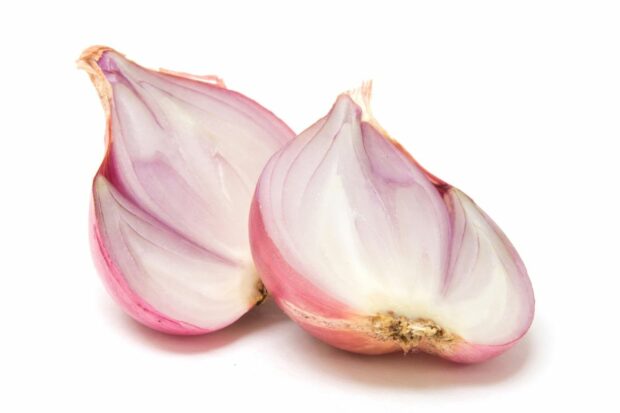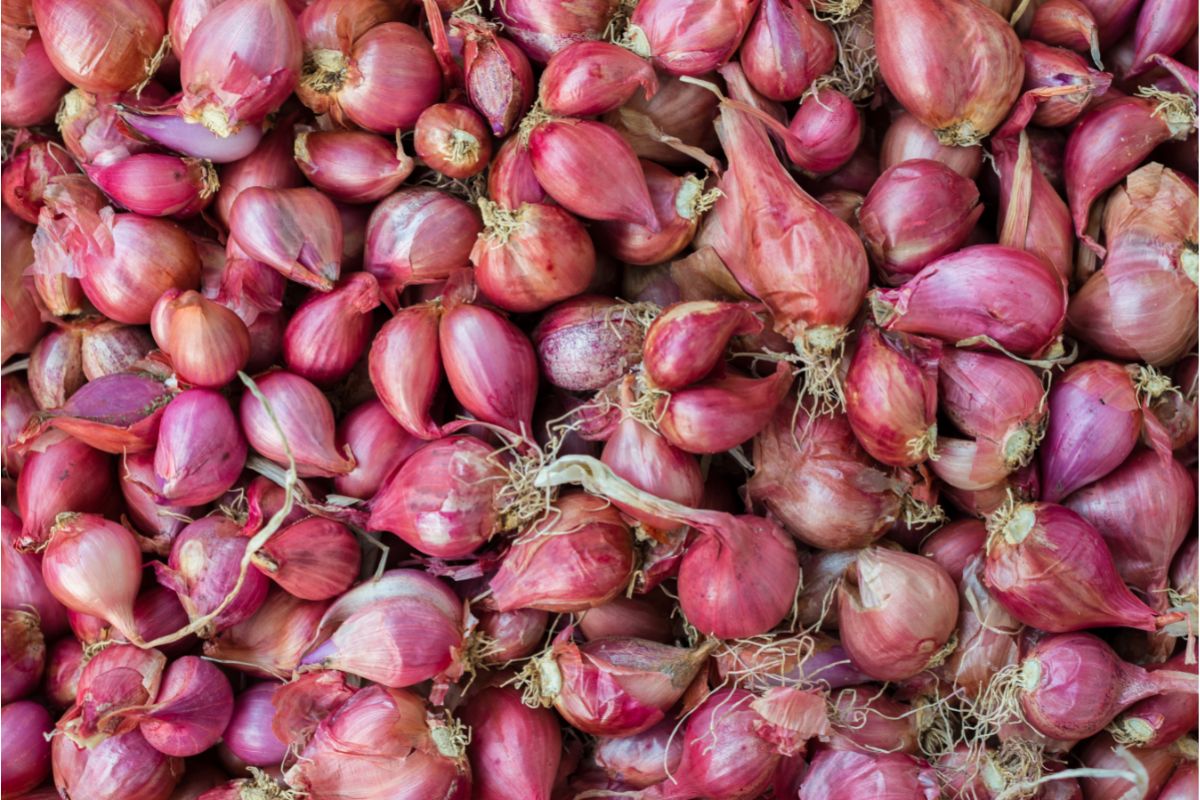Shallots are great for seasoning various foods, and most people buy them fresh. How long shallots last depends on where and how you store them, but as a general rule, you can keep shallots for about a month.

It All Depends on Where They’re Stored
There are numerous types of shallots, but they are usually sold whole and fresh. The amount of time they stay good and usable depends on whether the shallots are fresh, chopped or diced, or dried or pickled. Let’s take a look at each of these in more detail.
Fresh Shallots
Fresh shallots need to be stored in a cool, dry place, preferably one with a little ventilation. If your home is air-conditioned and you have a pantry in your kitchen, that is the perfect place to keep these shallots. The darker, cooler, drier, and better ventilated the area is, the longer the shallots will stay fresh.
You can keep shallots this way for up to four weeks before they start to go bad. If you live in a hot, humid area and your home is not air-conditioned, shallots generally last roughly two weeks.
You can also keep shallots in your deep freezer for up to six months or in the bottom half of your refrigerator for two to three weeks. If you don’t want to freeze or refrigerate your shallots, keeping them in a dry, cool place is your smartest option.
Diced or Chopped Shallots
Once you dice or chop your shallots, they should be refrigerated or frozen and not left on your countertop, where they’ll usually go bad in just a few hours. If you have chopped or diced shallots that you want to save, place them in an airtight container and keep them in the refrigerator for up to four days or in a freezer bag in the freezer for up to six months.

Dried or Pickled Shallots
Occasionally, people will pickle or dry their shallots. In fact, you can even find pickled shallots in sealed jars. If you dry your shallots, they can be stored in the open without any problems. With dried shallots, the jar needs to be refrigerated once the seal on the lid is broken. Keep an eye out for mold in the coming weeks, and throw out your pickled shallots once they get moldy or cloudy.
The shelf life of dried or pickled shallots will depend on the humidity in your home and various other factors, so keep a close eye on them.
Fresh vs. Bad Shallots
You might think it’s difficult to tell if your fresh shallots are good or bad, but that is not the case. When shallots are fresh, they will be either grayish-white, rose red, or a golden color.
If the shallots are starting to go bad, you will find an interior that is very soggy and even pulpy. The outside of the shallots may have dark spots or a moldy look, and they may even have a bad smell. These are clear signs that the shallots need to be thrown away.
Take Good Care of Your Shallots
Shallots are great aromatics for various dishes (they are an excellent onion variety for fajitas and also work as a substitute for mushrooms in beef Wellington). They usually last about four to five weeks, but they can last much longer if you freeze them. Your best option is to keep them in a cool, dry place with some ventilation so they can stay fresh for up to about a month. You can freeze them for up to six months.
